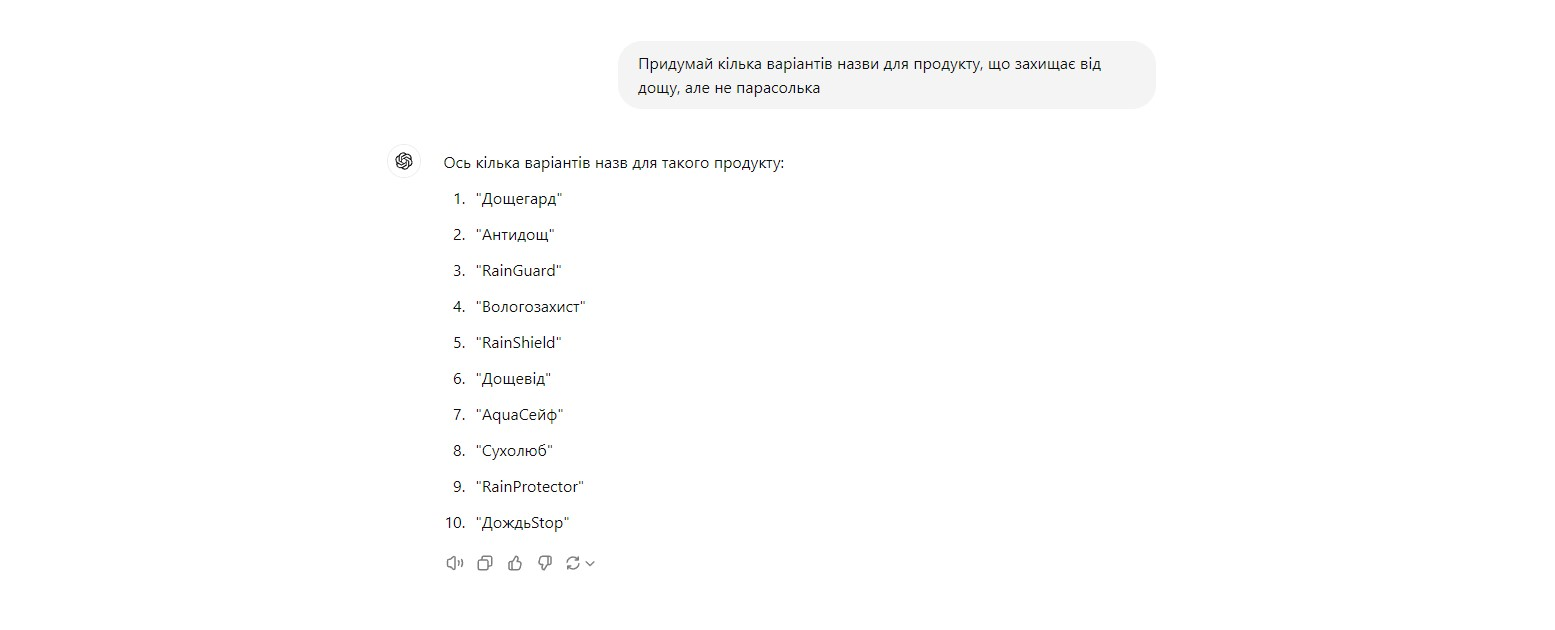“Whatever you name a boat, it will sail,” the famous cartoon character assured. The same can be said about the brand name of a future product. Of course, in a way this is a slight exaggeration. Mercedes became synonymous with unprecedented quality and premium attention to detail not at all because it was named after a royal person or a famous scientist. And “Coca-Cola” is not at all the result of a successful application of the concept of rhyming in naming, but simply the name of two key ingredients of the drug: coca leaves (the same) and the nuts of the tropical kola tree.
However, this is more of an exception. In the modern world, naming has not become an exact science, it has a significant creative component, although the process of creating a name for a product is still subject to certain rules and logic. But, as the Romans or the Greeks say, “it is not the Gods who burn pots.” You can give a cool name to a brand even without a marketing agency, and not for all the money in the world. The main thing is to understand how to do it correctly. And to train this skill.
What is naming?
Naming is the process of creating a marketing name for a product. This is not a process separate from the business or overall strategy, but an important component of it. In this case, the term marketing strategy should be understood more broadly, far beyond advertising or PR. It is about finding unfulfilled (or poorly fulfilled) consumer needs and creating an offer to satisfy them.
Imagine that humanity still lives without an umbrella. Every day, millions of people come to work wet from head to toe, and on Facebook, from time to time, posts are published by "sofa" engineers who suggest using plastic bags, newspapers and magazines to protect themselves from the rain. This is the unmet need of consumers.
One day, you and your friends come up with an idea to create a convenient, foldable device that you can wear over your head to protect yourself from the rain. Congratulations, you have a brilliant idea. A few months of engineering work, a little more time for field testing, and you can bring your invention to market.
And here the question arises: how to name a new product. Now, of course, we would call it an umbrella, but in our fictional world this word means absolutely nothing. It is just a set of sounds that is in no way connected with rain or protection from it. So you need to go through an extremely important stage - choosing a name. That's what naming is and why it is so important.
What are the characteristics of a successful brand name?
But where to start? Start with the most important principles of a successful brand name. Your product name:
- Corresponds to the essence of the product, its objectives, and the general marketing concept;
- emphasizes the main advantages of the product or business;
- is short and concise;
- is easy to read by the consumer in the market where the product is being marketed (Palyanytsia in Russia is not the best name for bread);
- is easy to remember because it sounds good;
- is unique, including from a legal point of view;
- evokes pleasant, positive emotions;
- is not associated with anything unpleasant;
- ideally, it sounds rhythmic and can easily rhyme;
- and very importantly: it is readable in both Cyrillic and Latin.
We asked ChatGPT to come up with a dozen names for our innovative device, warning the artificial intelligence that it was not allowed to use the word “umbrella” for this. ChatGPT is unlikely to be the best brand name generator, most likely, specialized specialists will give it a good head start, but for understanding the general concept, the well-known algorithm is perfectly suitable. At least, the options it proposed demonstrate very well how exactly the principles described above should be used. Here is what ChatGPT suggested to us:
- Rainguard.
- Anti-rain.
- RainGuard.
- Moisture protection.
- RainShield.
- Rainguard.
- AquaSafe.
- Dryness.
- RainProtector.
- RainStop

Main stages of the naming process
1. Analytical research. First of all, you should carefully analyze not only the product itself, but also the audience it will target, the marketing strategy. It's one thing if your product is a cockroach remedy. It's another if it's premium cosmetics.
2. Determine the key parameters. What is your product about: beauty and health or functionality? Will it solve practical problems or focus on the emotional component. With this approach, you can narrow down the search for options.
3. Assess your audience. Who are the people who should buy your product? A teacher in a secondary school, a driver or a top manager of a large company. The name of the product should match the expectations of the audience. Even their vocabulary.
4. With the directions and limitations defined, it’s time to start brainstorming. The key rule of the latter is that there are no bad options. Leave criticism behind in the parentheses of this process. Real gems are born not by one specific genius, but by the synergy of thoughts: someone said a complete nonsense, but it prompted someone else to come up with a really cool idea. This instruction works, so follow it.
5. Ideally, the brainstorming session should yield at least fifty options. Using any convenient method – rating voting, independent analysis, etc. – select the ten strongest options. Pay attention to the harmony. This process can be carried out in several stages, leaving a dozen or so fewer options after each round.
6. Check to see if there are any similar names among your direct competitors? Or in related product markets? Are there already brands with this name in your country? It would be better to exclude all such names from the list.
7. Repeat the process until you have 2 or 3 best names left. Consider whether these names will be both a trademark and a legal name for your business. Be sure to check the patent purity of these names.
8. Now you can add a creative component. For each of the names selected “for the finals”, try to come up with a slogan and a promotion concept. Or maybe you already have ideas for a logo?
9. Test the names. If your budget allows, you can order a focus group from an agency – the company will select the right audience and plan the research. If you don’t have such resources, you can try to conduct a small study yourself. For example, on social networks.
Finally, it remains to register the name to protect it from plagiarism (by the way, in Ukraine such registration provides access to purchasing a domain in the .ua zone). This step in the algorithm for coming up with a brand name is not absolutely necessary. But if you are creating a product not for a few days or months, but are striving for long-term brand development, it is better not to ignore this stage. It is not so expensive, although it is quite long - from several months.
Methods and techniques for creating names
In the process of generating a product name, you can use stable and very simple technological techniques. The most common of them are the following:
- Association method. For example, using words related to speed, accuracy, records, etc. for a sports brand. Among the brands you know, this concept has been applied by Arena and Speedo.
- The method of standards. Of course, we do not suggest that you engage in outright plagiarism. But in the world of marketing, there are entire nations that are considered the best manufacturers of certain products. Did you know that the tire brand Premiorri is entirely Ukrainian. The same goes for Carlo Pazzolini shoes. It's just that many consumers believe that Italian shoes for people and cars are the best. So why not use Italian notes in the name?
- Rhyming method. All these "chiki-piki" literally stick to the tongue. So if you have a good idea, you can try it.
- Geographical method. If your product, especially when it comes to food, has an obvious geographical link, you can use the names of places. This works well when the latter is additionally associated with environmental friendliness and pristine nature. Examples of such a concept include Morshynska, Yagotynske, Koblevo, Tulchynka, Torchyn, and many others.
- Abbreviation method. Not a very popular method in the modern world. Although you can come across such naming examples almost every day. There really is no great sense in this, because a set of letters is unlikely to be able to evoke any emotion in the consumer. Moreover, most often companies come to abbreviations after years of work on the market, when they already know them well. Moreover, this is often a simple adjustment: if consumers call the Austrian bank simply Rife among themselves, then why resist? An example of such naming is FUIB bank. But reducing to abbreviations understandable to consumers is not a quick process: it took Kentucky Fried Chicken more than half a century to turn into KFC.
- Using your own name. This is an old but not outdated method. A whole bunch of world-famous brands bear the name of a person who once started a business. Now this method is not as widespread as it was 100-200 years ago. However, for business segments where personality plays a key role, this can be the best strategy. Design bureau, psychotherapy studio, massage parlor, medical practice - these are the areas where the name of a key person is worth more than the most apt associative instances.

Mistakes to avoid when choosing a name
It is quite difficult to make mistakes in the process of creating a brand name if the above instructions are carefully followed. But mistakes still happen. One of the most common is blind and unsupported belief in a fictional name. That is why it is important to conduct “field” research, albeit in a limited format, among the target audience. After all, what seems brilliant to you, the consumer may perceive differently.
Often, when expanding a brand to new foreign markets, companies do not take into account linguistic or socio-cultural features. Agree, bringing the Bledina baby food brand to the Ukrainian market is not a very good idea. Danone, which owns the brand, thought the same thing and brought the same product to our market under the Milupa brand.
In general, you should avoid complex, long, and difficult-to-pronounce names, ones that require a lot of effort to teach the consumer to at least pronounce them correctly.
And when trying to put the essence and ideology of the product into the name, you shouldn't be too straightforward. All these delux, exclusive, luxury in no way add to the premiumness of the product, but only repel the consumer.
The role of naming in overall brand strategy
We have already talked about the role of naming in the overall brand building strategy for the most part above. Here I will just summarize: the name of a product or company, if we are talking about services, is not self-sufficient. It should become part of the overall marketing strategy. Aunt Asya came to visit her relatives not in the central district of the capital, but in a small town. After all, the brand was aimed at a low price category.
Examples of successful naming strategies
First of all, it should be recognized that naming technologies have changed radically in recent decades. If a century ago it was “fashionable” to give a company its own name, now this approach does not work well, because it requires more effort and time. It took dozens and dozens of years for Toyota to become a synonym for quality in the automotive industry. And only a few years for the word Tesla to cease to be associated with the inventor Nikola Tesla and become a synonym for innovative and even revolutionary electric cars.
There are successful examples of naming among Ukrainian companies as well. For example, the Kvochka trademark, under which chicken eggs are sold. Or Nova Poshta, well known to every Ukrainian, whose name perfectly reveals the business idea and the essence of the product. The list can be continued for a very long time. Semki and Stozhar, Oleyna and Voloshkove Pole, Freken Bok and Rozetka.
There are many successful examples of geographically associated names in Ukraine, where the natural virtues of the production location emphasize the quality characteristics of the product and marketing efforts. In 2021, the consulting company MPP Consulting valued the Morshynska brand at $493 million. Thus, the country's most famous mineral water topped the TOP100 rating of Ukrainian brands that year.
But still, although the name is extremely important, in many ways the success of a brand depends not so much on the name of the product, but on the combination of its name, characteristics and marketing strategy as a whole. By combining all three components, making constant efforts, you can create a really cool brand and make millions of people fall in love with it. This is a long and quite expensive process if you create a name with an expensive international advertising agency. So if this article was not enough for you to create a cool name on your own and you need financial support in this process, try entrepreneurial loans from Unex Bank.










